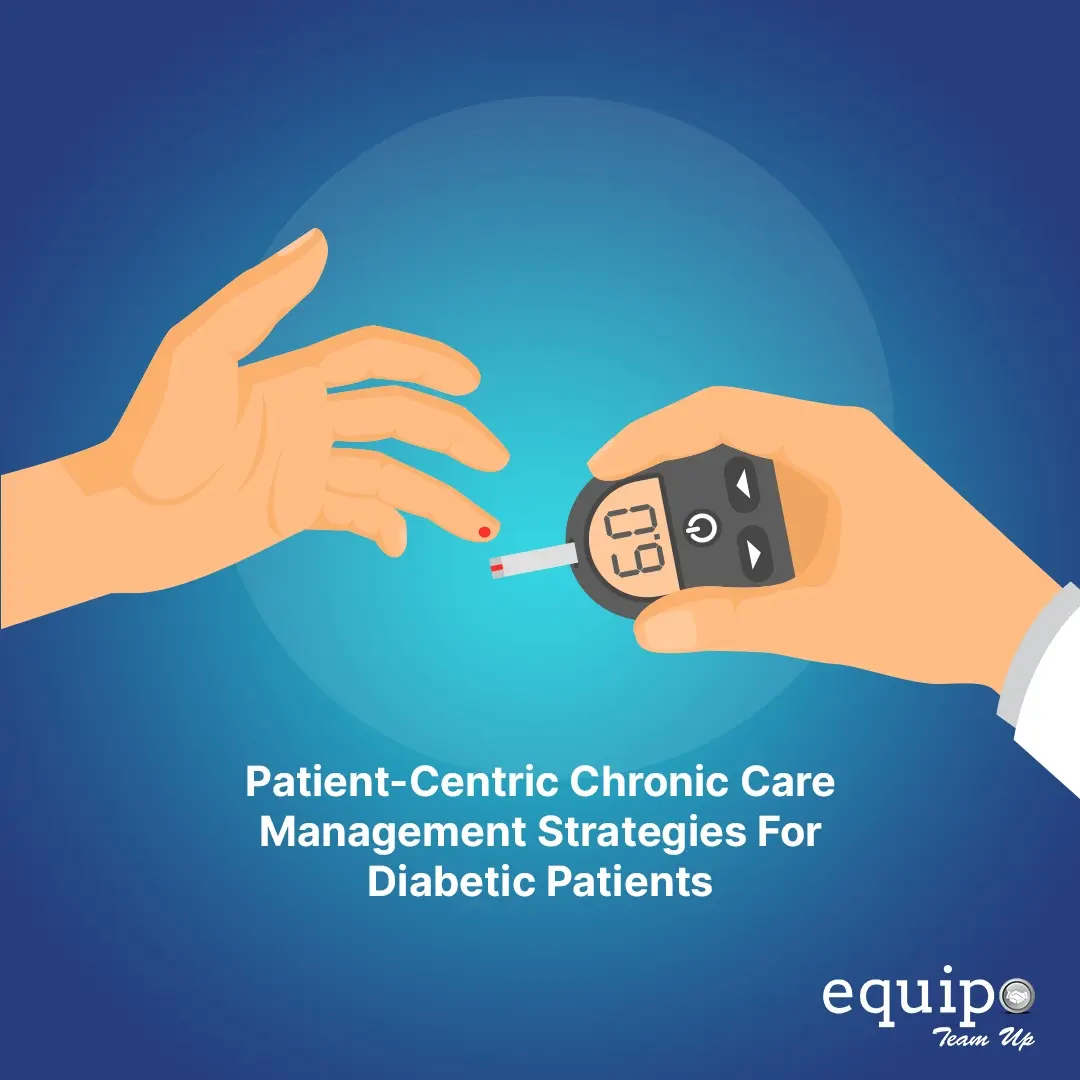Where diabetes is a leading concern for mortality and morbidity globally, It’s essential to initiate a patient-centered care model in healthcare organizations to improve health outcomes. As per research, approximately 29.1 million Americans, 9.3% of the US population have been diagnosed with diabetes. Furthermore, the numbers are expected to rise to 592 million by 2035, which further signals the need to increase patient engagement in their own care.
In the traditional provider-centered approach, the power dynamics puts the care provider in control and leads the patients to follow the given directions. However, as opposed to this, patient-centered care understands the care gap and analyzes how every patient experiences illness individually.
Thus, patient-centered care is an excellent shared decision-making tool that helps patients and providers to identify external factors and reduce care gaps. In detail, this article discusses the patient-centric chronic care management strategies for diabetic patients.
The Role of Patient-Centered Care in Glycemic Control
When it comes to improving care for Type 2 diabetes, care providers and researchers set out to understand the relationship between patient-centered care and glycemic control.
According to recent studies, if the providers or healthcare professionals understand the demographic information, it will be easier to infuse self-care behaviors into their patient’s diabetes management.
For instance, the physician needs to understand the following:
- What reason led his patients to visit the clinic?
- Are they getting enough time to explain their problems?
- Do they know what external factors influence their health?
- Are there any questions they need to ask about their care?
Moreover, patient-centric chronic care management is a complete approach that monitors these factors and supports the patients in changing their diet, exercise habits or glycemic control, blood glucose testing, medication adherence, and screenings for lower limb problems.
It not only helps the providers to prescribe proper medications but also engages the patients to comprehend the underlying health concerns of diabetes and overcome physical health limits to participate in better glycemic control through various activities. Hence, patient-centered care is strongly associated with self-care behaviors and better quality of life.
How is PCC Shaping the Clinical and Self-Care Behaviors in patients?
Primary care providers generally tend to mitigate the illness before it becomes catastrophic. With a patient-centered approach, they can determine what’s ailing a patient and conduct continuous glucose monitoring (CGM) to improve their general health status.
It allows the patients to measure their glucose levels 24*7 without any medical experts and helps in detecting trends and patterns that give a complete picture of diabetes.
In this process, the patients get enough exposure to their care programs and can track their progress to develop more active and healthy lifestyle choices. This patient engagement goes beyond patient-provider communication and makes healthcare more accessible for better diabetes glycemic control.
Effective Integration of Patient-Centered Strategies for Diabetic Patients
1. Shared-Decision Making (SDM)
Shared-decision making model is a conversation in which patients and physicians develop a common view of the patient’s situation to create a care plan to address the patient’s expectations, preferences, goals, and values. For example, in diabetes, patient-centered care designs a care plan that is more likely to respond well to the problematic situation of the patient.
2. Motivational Interviewing (MI) Techniques
Motivational interviewing is a unique technique to reduce the care gaps in diabetes. It helps the practitioner to focus on the patient’s specific behavioral targets and provide opportunities. In addition, it helps patients understand the essential key factors to manage tight glycemic control and achieve better health outcomes.
3. Shared Medical Appointments (SMAs)
As an alternative to one-on-one clinical appointments, SMAs are a group of visits that integrate self-management education and promote the identification of barriers to self-care in patients. In addition, it focuses on distributing awareness of diabetes and finding methods to overcome the obstacles while receiving new knowledge and skills.
4. Multidisciplinary Team Collaboration
Multidisciplinary team collaboration improves health outcomes by allowing referrals between disciplines and discovering the most successful pattern to make the healthcare process more patient-centric and flexible. In other words, it’s an integrated management with multiple treatment goals, including glucose, blood pressure, and lipid control, to reduce the number of hospitalizations.
Conclusion
Patient-centered chronic care management represents a breakthrough in diabetes care as it promotes better glycemic control, shared decision-making, motivational interviewing, and a collaborative approach to mitigate the severity of diabetes. It further pushes the patients to participate in self-care behaviors to manage their chronic conditions.
Equipo’s chronic care management promotes automated care programs that help healthcare professionals to increase patient participation and track their progress. The CCM tool identifies all screenings and risk factors across care programs and supports patient-centered care for the welfare of more advanced healthcare sectors. Schedule a demo today.

